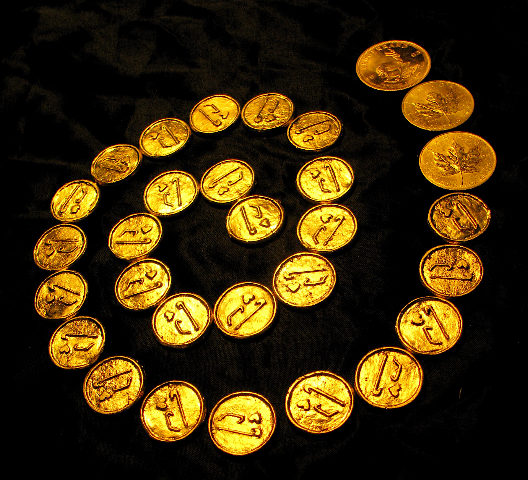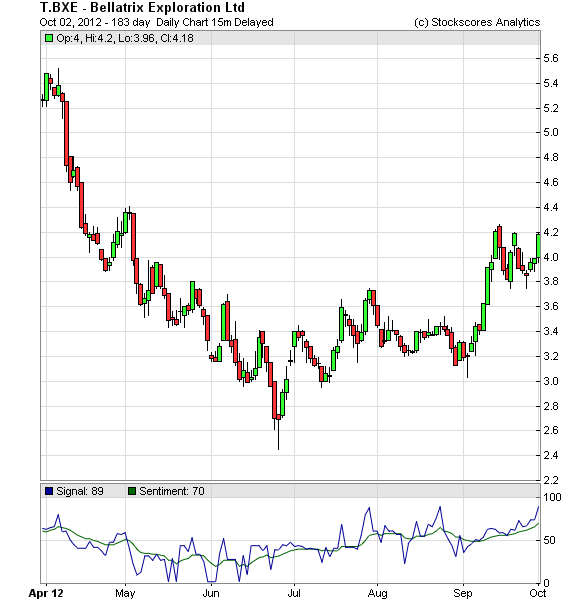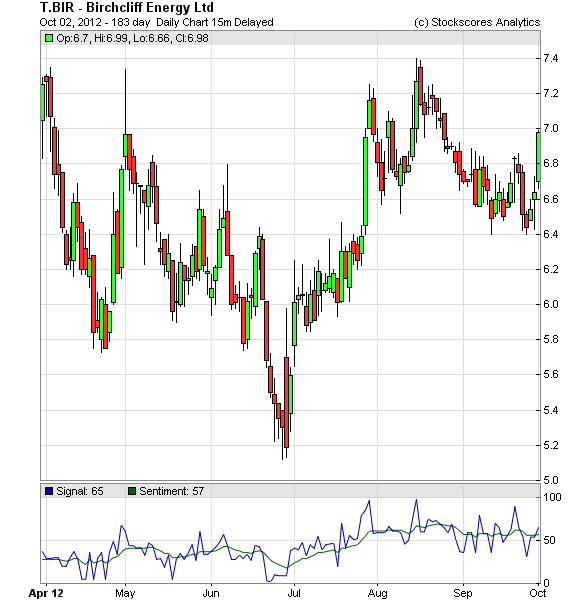There is little that would rock the oil world more than a revolution in Saudi Arabia.
But with a coming leadership crisis, it is becoming all too likely.
Saudi is facing major economic challenges as dramatic increases in social spending and domestic fuel consumption eat through the kingdom’s all-important oil revenues.
Saudi Arabia is smack in the middle of the Middle East, an ever-tumultuous region currently rocking and rolling more than usual as the Arab Spring challenges longstanding autocratic assumptions, while war-torn Syria and defiant Iran tip the delicate Sunni-Shia religious balance in the world’s most important oil region.
While the House of Saud might present itself as a stable, strong, and cohesive royal family, in truth the king and his successors are growing old and incapacitated in a throne room full of competing contenders. Meanwhile, the only other organized social group in the country—the Islamists—are waiting just outside the door.
Want to See Oil at $300 a Barrel?
To see $300/bbl oil, or to watch the news as Saudi troops attack Tehran, or to see a stranglehold on U.S. oil imports, watch what a failed succession battle in the House of Saud that ends up destroying the whole family and ushering in an Islamist age in Saudi Arabia would do to the price of oil.
It could happen sooner than you think.
A Shaky House of Saud
The king of Saudi Arabia, Abdullah Aziz bin Saud, is almost 90 years old. In Saudi Arabia’s royal system, the throne passes not from father to son but from brother to brother. The problem with the system is that none of King Abdullah’s brothers are exactly young and full of vigor.
Crown Prince Salman, next in line to the throne, is already 76. He got the Crown Prince nod after two of his elder brothers died. The remaining brothers now average 80 years of age.
A king who ascends the throne in his seventh or eighth decade is unlikely to have the energy or even the time to enact significant reforms. And reforms are needed. I’m not pushing democracy—Saudis don’t generally want democracy. What I’m talking about are the endemic problems that are battering the world’s biggest oil producer: high unemployment, a corrupt bureaucracy, a crippled economy, a weak education system, and a society full of frustrated youth.
While the country crumbles, the three pillars that have long supported the royal family are also weakening. Massive oil revenues, which have long been used to buy public support, are being squeezed by sharply increased domestic demand. The Wahhabi Islamic establishment that supported the House of Saud is increasingly fractious and is losing credibility. And the royal family itself is struggling to maintain its rock-solid façade after losing two crown princes to old age in just a few years.
The country’s foreign relations are little better. The Middle East is in turmoil, and Saudi Arabia’s longstanding alliance with the United States is in distress.
Alongside these tangible problems is a multitude of intangible challenges that are revolutionizing the country. The regime used to control the population by controlling access to information, but of course that age is now almost over. The Internet has connected young Saudis with the rest of the world, and that worldview is prompting them to question some of the rules of their society.
Even the religious establishment in Saudi Arabia is seeing its power eroded. Young Saudis are increasingly independent, using the Koran to guide their decisions without following specific decrees from a particular religious leader.
The fact is, Saudi society today bears little resemblance to the passive masses of just a decade ago, and a decade from now the difference will be even bigger.
Trying to lead his country through these modern challenges is a 90-year-old king, backed by a 76-year-old crown prince and their octogenarian brothers.
Not surprisingly, it’s not working very well.
New Battles, Old Tactics
When the Arab Spring in Tunisia and Egypt sparked protests in Saudi Arabia, the protesters were not demanding democracy or trying to oust the royal family. No, the young Saudis who filled those streets had more basic demands.
At the top of the list is jobs—60% of Saudi’s citizens are under the age of 20, and the unemployment rate for young adults is nearly 40%. These young people want to be given the opportunity to better themselves and their country, but instead they cannot find work and live on government handouts.
Adding fuel to the fire, those handouts have been shrinking. Saudi Arabia’s population has skyrocketed in the last half century. In 1972 the country had 6 million inhabitants; by 1992 that number had climbed to 17 million; and today there are 28 million Saudi Arabians. Oil incomes have climbed too, but not nearly apace. As such the government has been struggling to keep the population appeased with fewer dollars per head every year.
The population keeps growing, and each person in the kingdom keeps using more oil. The result: shrinking oil revenues have to go further. It’s not a recipe for success, but when you’re 89 years old, you go with what has worked in the past.
And that is precisely what happened in the wake of the Arab Spring: King Abdullah drowned the protestors in money—a $130-billion social-spending package that built new housing, increased payrolls, and boosted unemployment payouts. Saudi Arabia’s entire annual budget is just $180 billion, so the king almost doubled spending to appease the protestors.
This tactic cannot work forever. Even in Saudi Arabia there is only so much oil money. The Saudi royals already need an oil price of at least $80 a barrel to support all their social programs, and with domestic oil consumption rocketing upward, that baseline price will keep climbing.
But the unrest continues.
The Summer of Saudi Discontent
After King Abdullah offered billions of dollars in social spending, many protestors went home. . .except in the country’s oil-rich eastern provinces, where the protests never stopped.
For the last 18 months Saudis in the eastern Qatif region have been demonstrating regularly, demanding the release of all political prisoners, freedom of expression, and an end to ethnic and religious discrimination. When Saudi security forces turned on the demonstrators last November, killing five, the protests took on a distinctly anti-Saud tone.
In June, King Abdullah ordered the country’s security forces to go on a state of high alert due to what he called a “turbulent situation” in the eastern region.
The unspoken side to the situation is that the turbulence is distinctly religious.
Most Saudis are Sunni Muslims, and Sunni Islam is the only allowed religion in the country. However, 15% of the country’s inhabitants are Shia, and they have faced direct and indirect persecution for decades.
Guess where the Shia live? In those turbulent, oil-rich eastern provinces.
That is one aspect of Saudi discontent. But there are more.
For example, last week Saudi security forces raided al Qaida cells in Jeddah and Riyadh. Evidence recovered during the raids supports the suspicion that a new branch in the Arabian Peninsula is gathering momentum for a wave of attacks. The royal family is at the top of their list of targets. Toppling the House of Saud would be a major victory for al Qaida, simply because of the instability that would ensue.
All told, between external threats, internal divisions, and domestic struggles, the Saudi royal family looks very unstable indeed. So what would happen if the House of Saud crumbled?
Remember, religion is the only social structure in Saudi Arabia. There are no political parties, unions, or social organizations, aside from a few charities run by members of the royal family. Were the House of Saud to fail, the only candidates ready to step up would be the Islamists.
The shift to Islamist rule in Egypt has made the world pretty nervous. Longstanding allegiances are in limbo, and long-term relationships are changing.
Imagine if it happened in Saudi Arabia.
Islamist leadership in Saudi would not be the moderate, democratic version we’re seeing in Egypt. The Islamists in Saudi Arabia are Wahhabi Muslims, who practice the strictest and most conservative version of the religion. I can see these imams making several moves.
First, a Saudi Arabia led by Wahhabi Islamists would not stay at peace with the Shia Islamic Republic of Iran. Both branches of Islam believe the other has strayed so far from the path that its followers are infidels. Odds of open war between Saudi Arabia and Iran would shoot sky-high the moment Islamists took power in Saudi Arabia.
Even worse, a Wahhabi Islamist Saudi Arabia might well turn its strongest weapon against the infidels of the West—by turning off the oil taps. It would be the 1973 oil crisis all over again, but in an even more oil-dependent world.
The price of oil shot up 300% in six months during the oil crisis. Today, that would mean an oil price of $300 per barrel.
It would also mean the end of the era of friendly U.S.-Saudi relations. . .and the demise of the petrodollar. That is a story in itself—one of great significance to anyone who owns U.S. dollars. I have discussed previously how a U.S.-Saudi deal to only use dollars to trade oil created a deep pool of support for the U.S.’s currency – and what will happen if the petrodollar dies. The short version is that as the global oil trade moves away from U.S. dollars into yuan, yen, rubles, and pesos, the world would have yet another reason to devalue the dollar.
Expensive oil, open Sunni-Shia war in the Middle East, the loss of one of the world’s biggest oil producers as a stalwart ally, and an inevitable increase in religious politics across the Arabian Peninsula—such are the likely outcomes if the House of Saud comes tumbling down.
It is not inevitable. There are 7,000 princes in the Saud royal family, the result of multiple wives and lots of progeny. In that mix there is undoubtedly a prince with the right mix of progressive thought and religious reverence to lead Saudi Arabia through its succession and into the future.
But whenever a throne room is that crowded, it is very easy for a brawl to break out, depriving that perfect prince of his chance and giving the Islamists their opening.
Either way, oil investors with the right picks in their portfolio will prosper, and the Casey Research energy team will be available to guide you along the way.




















